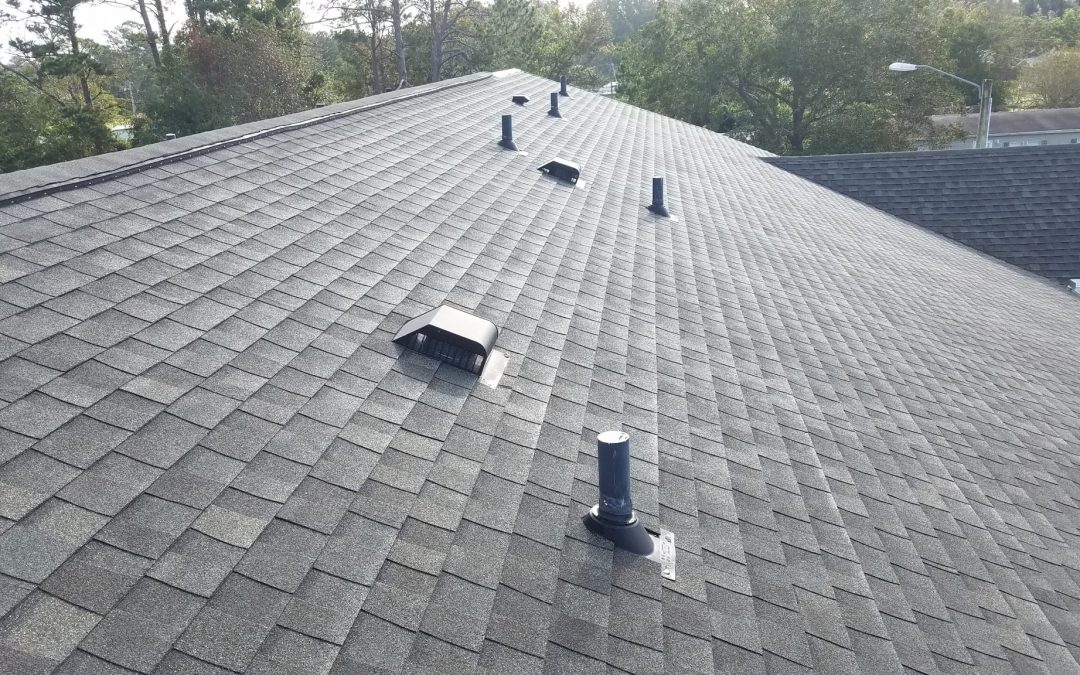Hurricane Florence devastated eastern North Carolina in September 2018. We spent much of our time evaluating roof damage the year following that disaster. What we witnessed from Hurricane Florence and previous high wind events is that a large portion of the damage to homes and multi-family complexes were related to water intrusion due to failure of the roofing system. Our inspections found that shingles were often not installed as per the manufacturer’s installation instructions for high wind zones.
Common mistakes noted during our inspections were:
- Nail pattern and number of nails are not in accordance with manufacturer’s requirements.
- Nails are not located at the correct measurement from the bottom of the shingle (in the common bond).
- Nails are over driven which is often a result of nail guns not being set properly.
- Shingles are not installed correctly at the eaves and rake edges. Most manufacturers have specific starter strip requirements, and the shingle overhang is flush or less than ½”.
- Ridge cap shingles are not installed correctly for high wind area. Additional sealant and 4 nails are required by most manufacturers.
Asphalt shingle installation instructions, including high wind zone requirements, are printed directly onto the shingle bundle cover. There is no excuse for a roofing contractor to install the shingles incorrectly when instruction methods are so easily available.
Roofing Improvement Tips
Roofing installations can be improved by selecting an architectural, also known as dimensional, style shingle verses a standard three-tab shingle. The architectural shingles are more durable and wind resistant.
If possible, vent the attic space with alternative methods than a ridge vent. Ridge vent shingles are more likely to be damaged during high wind events and are often not found installed in accordance with manufacturer’s instructions for high wind area.
Although we did not inspect standing seam metal roofs following Hurricane Florence, it appeared to us that the metal roofs performed better than many of the shingled roofs. The metal roofs were left with what appeared to be minor damage when neighboring shingled roofs suffered major damage.
Conclusion
Do not assume that all contractors are installing the shingles correctly. The roof may not leak, but it also may not be installed to withstand the high winds common in hurricane zones. There is potential for major interior water damage when the roof assembly fails.
We recommend that a competent person inspect the initial roofing installation methods while your new roof is being installed. Common mistakes can be found and prevented if an inspection is performed while the first couple of rows of shingles are being installed. It is preferable that the competent person is not an employee of the roofing contractor. It should be someone who has read and fully understands the instructions for the specific shingles being installed.
Written by Bobby Canady, PE and Shannon Weaver, PE
Larion PLLC – P1146

